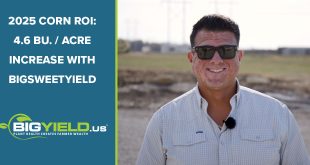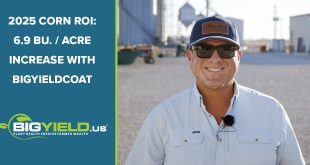During the past few years, farm economic and creditworthiness conditions have changed markedly. Good returns that growers captured during market highs produced surpluses for some. However, such reserves have already eroded in some cases. As grain prices continue to retreat, producers may struggle to earn enough revenue to pay their expenses.
A recent story from DTN/The Progressive Farmer highlighted potential economic challenges by sharing Farm Credit Administration estimates about cost repayment for corn producers. Assuming that corn has a $3.15 per bushel season-average price as USDA has predicted, roughly 88 percent of corn farms could manage to pay operating costs. However, the Farm Credit Administration estimated that just 17 percent could pay this season’s total costs, which include other expenses like land.
Eventually, conditions like these could lead to uncertainty about producers meeting terms of their financing arrangements or upholding their creditworthiness, which would influence their ability to secure future financing. The DTN story also reported repayment estimates from the Federal Reserve. In the bank’s Kansas City district, the story shared that roughly 22 percent of borrowers had repayment issues to some extent. Of those, the bank categorized 7 percent as having severe repayment challenges.
For producers interested in identifying different financing options, here are some alternatives:
- Review financing programs available from the Small Business Administration. The USDA Farm Service Agency isn’t the only government agency that offers loan guarantee programs. Agricultural producers can expect for loans through the Small Business Administration to have rates, terms, fees and so forth that vary, according to this story from The Roanoke Times. However, for producers who cannot close an FSA loan for whatever reason, the SBA may serve as an alternative financing source.
- Crowdsource as an option for financing. You may have heard of Kickstarter or GoFundMe as tools for raising funds that support charitable causes or start-up businesses, but such crowdfunding sites could also have application for agriculture. Barnraiser.us specifically provides a platform to help fund projects and businesses involved in food and agriculture. For tips about making the most of a crowdfunding initiative, Hobby Farms created a 10-tip guide .
- Beginning farmers and ranchers have unique financing options available. For farmers and ranchers who have operated for less than 10 years, they may access financing dedicated to helping them establish their businesses. You can learn more about the USDA Farm Service Agency’s commitment to beginning farmers and ranchers here .
This story from Farm Futures shares one Farmer Mac expert’s position about five factors that may improve farm financial management. The first stresses “tightening the belt.” We at BigYield.us have studied products and approaches that generate a good return on the investment. By making the right input selections for next year, you can minimize costs but still get big yields at harvest. In this video, John Ortiz of BigYield.us shares about our options for 2017 presales.
Please call or email us anytime for help with your input planning for next year.
 BigYield High Yield Soybeans, High Yield Corn, and High Yield Wheat
BigYield High Yield Soybeans, High Yield Corn, and High Yield Wheat



